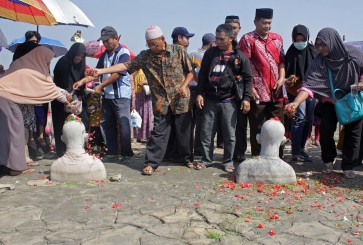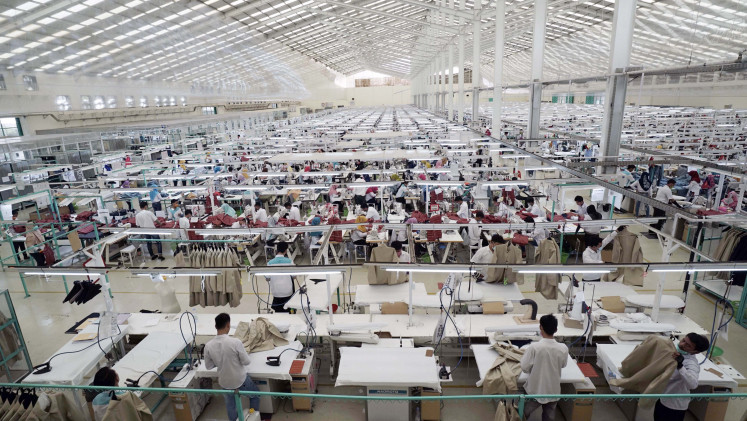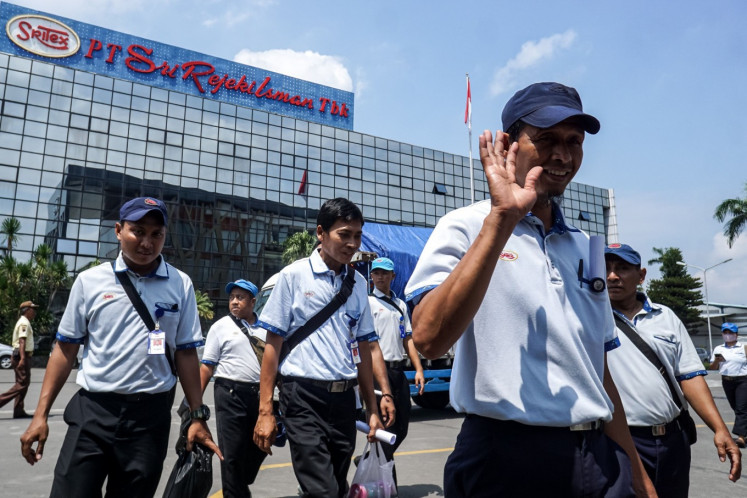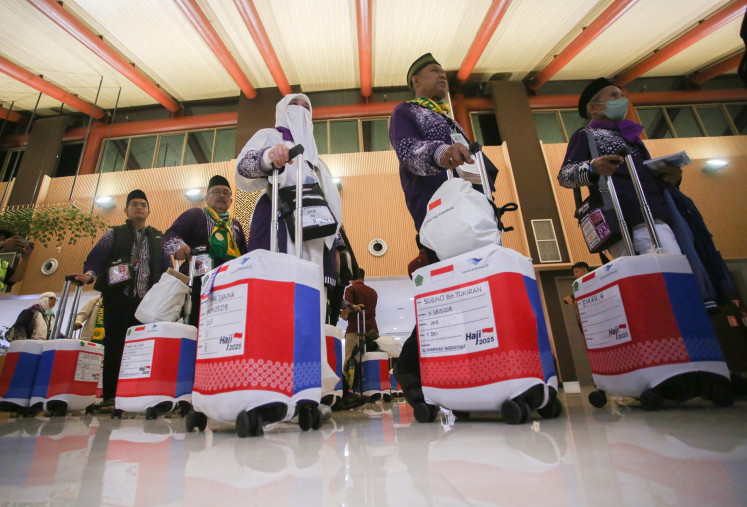Jakarta needs more public transport, access
Heavy duty: Workers arrange concrete blocks for a rail track in Buaran, East Jakarta, on Monday
Change text size
Gift Premium Articles
to Anyone

H
span class="caption">Heavy duty: Workers arrange concrete blocks for a rail track in Buaran, East Jakarta, on Monday. Railway operator PT Kereta Api Indonesia is building a new track in order to improve its service.(JP/PJ Leo)
A 2016 survey conducted by United States-based global traffic monitoring company Inrix placed Jakarta at 19th out of the 100 most congested cities in the world. According to the survey, a commuter generally spends 55 hours a month stuck in traffic during the capital’s peak hours.
However, Jakartans do not need a global survey to know the city’s congestion is already a problem. Jakarta has long been notorious for its traffic jams and the phrase “growing old in the streets” has become well-known among Jakartans who spend hours on the road every day.
Several urban transport experts recently discussed the future of Jakarta’s traffic, suggesting the administration maximize public transportation and make the capital more pedestrian friendly.
Marco Kusumawijaya, a member of the expert team of Jakarta Governor-elect Anies Baswedan, said the distance between commuters’ homes and workplaces was a chief cause of Jakarta’s traffic problems.
“People come to the city for social and economic mobility, which inevitably results in physical mobility. If people could live closer to their offices, for instance, then physical mobility would decrease significantly,” said Marco, who is also the founder of the Rujak Center of Urban Studies.
Meanwhile, Yoga Adiwinarto, country director of the Institute for Transportation and Development Policy, said the availability of public transportation, such as Transjakarta buses, could be the best answer to reduce the city’s traffic.
At least 52 percent, or 6.7 million, of Jakarta’s residents live within 1 kilometer of a Transjakarta bus shelter, making it easier for them to leave their private vehicles at home.
“Transjakarta’s bus lane is the longest in the world at 210 kilometers, covering all municipalities in Jakarta. What we can do to maximize it now is to strengthen its supporting infrastructure, including improving access for pedestrians,” he said.
He also described Jakarta as “too friendly toward cars and less toward anything else.”
“Get people out of their cars by creating easier access for pedestrians, public transport users and even bikers,” he said.
Meanwhile, Agung Wicaksono of city-owned railway company PT Jakarta MRT said that as a pilot project to integrate Jakarta’s public transport, the administration plans to develop a site in Dukuh Atas, Central Jakarta, into a hub for the majority of the city’s train and bus networks.
“The integration of these modes of public transport is important to provide more facilities for commuters. Lanes for private vehicles should also be replaced with bike lanes and wider sidewalks,” said Agung.
However, infrastructure is not the only thing the city needs to develop. A sense of belonging must also be encouraged among public transport users.
“Do not consider public vehicles as something belonging to the operators, but rather as something the people own themselves,” said Rendy Silalahi from the Jakarta one-stop integrated service agency (PTSP).
Rendy said public transport operators should also work together to serve all areas of the city.
“The administration will be able manage public transport operators easier if the operators are willing to follow the system [as designed by the administration],” Rendy said. (dea)









